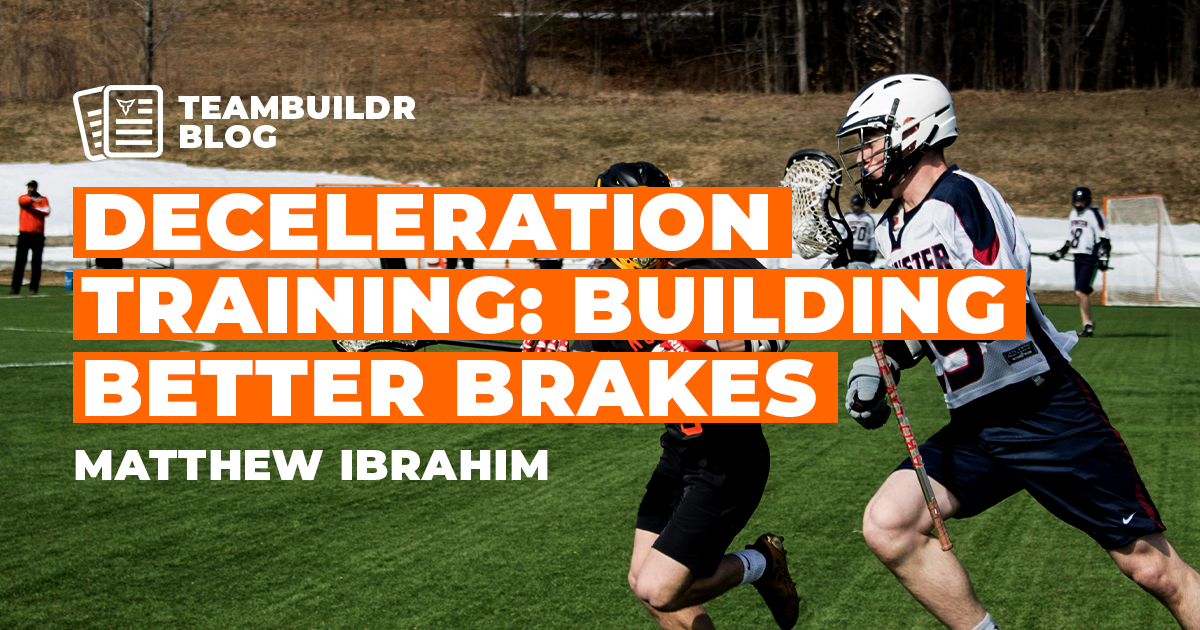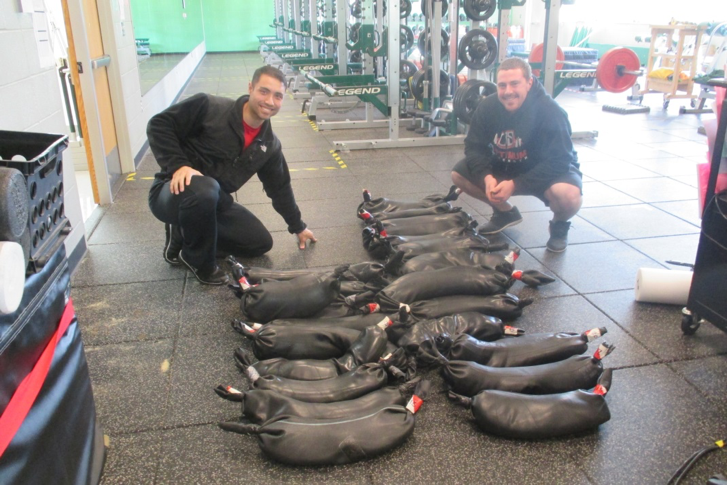Prevent & Preserve: A Guide to Low Back Training
The journey to a strong, resilient lower back involves a thoughtful and progressive approach. Whether recovering from an injury or seeking to enhance your overall athletic performance, low back progressions play a crucial role in building stability, strength, and flexibility. In this guide, we'll explore a series of exercises designed to gradually improve the health and functionality of your lower back to prevent injury and help your athletes persevere with athletic performance.
Establishing Core Stability
Begin your low back progressions by focusing on core stability. These can be performed during a warm-up, within supersets, or a cooldown. A strong core provides the necessary support for your lower back. Start with foundational exercises such as plank variations, bird dogs, and hanging leg raises. These movements engage the muscles around your abdomen and lower back, laying the groundwork for more advanced exercises. Let’s look at a simple progression for the plank & leg raises as an example:
- Plank
- 30 seconds of plank
- 30 seconds of the plank with leg lifts
- 30 seconds of a weighted
Justification: Planking is a simple but effective way to develop core stability. When progressing, start by removing a limb for the floor to activate the local and global stabilizers of the core. Eventually, once the body has progressed and is stable, add load. The above example can easily be implemented within 2-3 weeks per each progression.
- Leg raises
- 15 reps of lying leg raise
- 15 reps of hanging knee raise
- 15 reps of hanging leg raise
Justification: Leg raises develop core stability by focusing on the stretching and contracting of the transverse abdominus. This muscle when strengthened can assist in stabilizing the core and pelvic floor so pelvic tilts can be reduced. When progressing the leg raise movement category the coach must focus on slow and controlled motions.
I love the idea of adding tempos to this movement category since it will help decrease t-spine/lumbar spine movement while increasing movement quality. The lying leg raises are used to teach the athlete to brace their spine against the floor while performing the leg raise, while the hanging knee is used to get the knees above parallel (to the floor) first.
In the last progression, we simply add more torque to the body by straightening the legs so the athlete has to squeeze the core as tightly as possible to prevent him or her from swaying due to the lack of a ground floor supporting the spine. Take longer with this progression series. I use each of these variations for 4-5 weeks each due to the higher complexity of a movement compared to the plank example above.
Mobility
Mobility is a massive factor in establishing a healthy lower back. Incorporate dynamic stretches like the cat-cow, t-spine rotations, piriformis, & hamstring movements to enhance flexibility in the spine. Before my time in tactical, I had little to no education on how specifically the T-Spine influences low back tightness. The more research I did, the more I was dumbfounded by how important the T-Spine was on both lower and upper back tightness. I highly recommend all S&C professionals read the work of Dr. Stuart McGill & Kelly Starrett to obtain more specific information on this. I would love to do a deep dive into the McGill Big 3, however, these books will give you much better information than I can.
Strength Training: Movement Quality & Unilateral Movements
As your core stability improves, introduce strength-building exercises. Bridging exercises activate the glutes and hamstrings, promoting a stable pelvis and reducing pressure on the lower back. Complement these with tempo back extensions or reverse hypers to target the erector spinae muscles along your spine. Gradually increase resistance, time under tension, and volume as your strength improves and pain decreases
Simultaneously programming in functional movements like squats, hinges, lunges & glute activation exercises to enhance overall lower body strength. These exercises should engage multiple muscle groups, promoting balance, and coordination. However, please note that changing planes of motion as your program progresses is needed. Such movements could include step-ups (both lateral & forward), and lunges (with rotations, FFE/RFE, or in sagittal or frontal planes). These in turn can help eliminate the likelihood of more imbalances forming throughout the training program while developing more general physical preparation for your athletes in long-term athletic development. Proper form is crucial to prevent unnecessary stress on the lower back, so start with body weight and progress gradually.
Progression and Patience
Sometimes our athletes are already injured. Whether you are working in tactical like myself, with rugby overseas, or in D1 collegiate field hockey; the goal is to remove pain while increasing athletic performance where applicable. Several steps should be taken as a practitioner with your athletic or human performance staff if your athletes are already injured.
- Inform all staff members of an injury.
- Get contraindications from a medical professional (doctor, PT, or AT preferred).
- Coordinate a plan of attack to assist medical staff on return to play.
- Once cleared for physical activity in the weight room, progress extremely slow if need be. However, make sure to ask the medical staff & yourself these questions below:
- What was the nature of the low back injury?
- How much time do we get to assist with the rehab/prehab as coaches?
- What are the contraindications for said injury (Low back for the purposes in this article)
- Are the medical staff biased? How can you as a practitioner educate or find common ground for the sake of the athlete's best interest?
- Finally: Are YOU biased in your approach? Where do you as a coach fall short of your knowledge in assisting in these matters? How can you solve this gap?
- Once return to play is confirmed, focus on redeveloping work capacity and hypertrophy.
- While maximal strength is important, I would highly recommend waiting till the next offseason to reimplement performance testing.
Once answered, please remember that progress takes time. Listen to your body and progress at a pace that feels comfortable for you. It's essential to challenge yourself, but not to the point of pain or discomfort. Incorporate these low back progressions into your routine consistently, adjusting the intensity as your strength and mobility improve.
Conclusion
Low back progressions are a journey towards improved strength, stability, and mobility. By incorporating this guide into your fitness routine and emphasizing proper form and progression, you can unlock the full potential of your lower back. Take the time to build core stability, train compound movements, and unilateral movements, & work with the entire athletic performance staff accordingly. Your lower back will thank you for the investment in its long-term health and resilience. As always please feel free to take my work and build off of it.
Feel free to reach out to me on my coaching email (CoachKostaTelegadas@Gmail.com) or direct message me on Instagram @Coach_Telegadas if you want to talk programming as a strength and conditioning coach.
Subscribe to our blog
Subscribe to receive the latest blog posts to your inbox every week.
Related posts

Things I Wish I Knew Before Going TSAC: Part 3

Deceleration Training: Building Better Brakes


